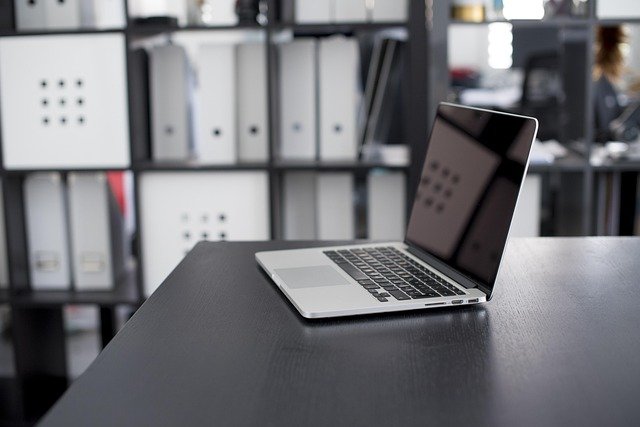What Secrets Do Office Desks Hold About Productivity and Comfort?
The modern workplace has evolved dramatically, yet one element remains central to our daily productivity: the desk. Beyond its surface appearance, your desk holds numerous secrets that directly influence your workflow efficiency, comfort levels, and overall work performance. Understanding these hidden factors can transform your workspace from a simple furniture arrangement into a carefully orchestrated environment that enhances both your physical well-being and professional output.

Your desk serves as the command center of your professional life, yet most people overlook the profound impact that thoughtful desk selection and arrangement can have on their daily performance. Research consistently demonstrates that workspace design elements significantly influence cognitive function, physical health, and job satisfaction.
How Does Desk Design Shape Your Daily Workflow?
The impact of desk design on workflow efficiency extends far beyond aesthetics. Modern ergonomic studies reveal that desk configuration directly affects task completion rates and mental clarity. L-shaped desks, for instance, provide distinct zones for different activities, allowing users to maintain organized workflows while reducing the cognitive load of task switching. Standing desks have gained popularity not merely as health trends, but as productivity tools that promote alertness and reduce afternoon energy crashes. The surface material itself plays a role - smooth, non-reflective surfaces reduce visual distractions, while adequate depth prevents the cramped feeling that can lead to stress and reduced focus.
What Ergonomic Principles Transform Workplace Comfort?
Ergonomic principles for enhanced comfort at work center on the relationship between your body and your workspace. Proper desk height should allow your forearms to rest parallel to the floor when typing, with your feet flat on the ground. The monitor should sit at eye level, approximately an arm’s length away, to prevent neck strain and eye fatigue. Keyboard and mouse placement requires careful consideration - they should be positioned to maintain neutral wrist positions throughout the day. Cable management systems, often overlooked, contribute significantly to both visual clarity and physical safety, preventing the tangled mess that can create stress and pose tripping hazards.
How Does Organization Impact Your Mental Performance?
How desk organization influences productivity levels reveals fascinating insights into human psychology and cognitive function. A cluttered desk creates visual noise that competes for your attention, leading to decreased focus and increased stress hormones. However, complete minimalism isn’t always optimal either - having frequently used items within easy reach reduces interruptions to your thought processes. The key lies in strategic organization: keeping active projects visible while storing completed or future items out of sight. Digital organization mirrors physical organization - a clean desktop and organized file system on your computer complement a well-arranged physical workspace.
Why Does Desk Height Matter More Than You Think?
Understanding the relationship between desk height and health unveils critical connections between workspace setup and long-term well-being. Incorrect desk height contributes to a cascade of health issues including carpal tunnel syndrome, neck pain, lower back problems, and even cardiovascular concerns from prolonged poor posture. Adjustable desks offer the flexibility to alternate between sitting and standing throughout the day, promoting better circulation and reducing the risks associated with sedentary work. The ideal desk height varies based on individual body proportions, making one-size-fits-all solutions inadequate for optimal health outcomes.
What Expert Strategies Create Peak Performance Spaces?
Expert tips for creating a productive workspace combine scientific research with practical implementation strategies. Lighting plays a crucial role - natural light boosts mood and alertness, while task lighting reduces eye strain during detailed work. Temperature control affects cognitive performance, with studies showing optimal productivity occurs between 68-72°F (20-22°C). Personal touches, such as plants or meaningful objects, can reduce stress without creating clutter. The positioning of your desk within the room matters too - facing a wall can increase focus for detail-oriented tasks, while facing outward promotes collaboration and creative thinking.
Real-World Investment Considerations for Office Desks
When considering desk investments, prices vary significantly based on features and quality. Basic computer desks typically range from €100-300, while ergonomic adjustable models can cost €400-1,200. Standing desk converters offer a middle ground at €200-600. Premium executive desks with advanced features may exceed €1,500.
| Desk Type | Price Range (EUR) | Key Features |
|---|---|---|
| Basic Computer Desk | €100-300 | Standard height, basic storage |
| Ergonomic Adjustable | €400-800 | Height adjustment, cable management |
| Standing Desk | €500-1,200 | Sit-stand capability, memory presets |
| Executive Suite | €800-2,000+ | Premium materials, extensive storage |
| Compact/Space-Saving | €150-500 | Fold-away design, multi-functional |
Prices, rates, or cost estimates mentioned in this article are based on the latest available information but may change over time. Independent research is advised before making financial decisions.
Conclusion
Your desk holds the power to either support or hinder your professional success and physical well-being. By understanding the intricate relationships between design, ergonomics, organization, and health, you can transform your workspace into a productivity powerhouse. The investment in a properly designed and organized desk setup pays dividends through improved focus, reduced health issues, and enhanced job satisfaction. Remember that the perfect desk setup is highly individual - what works for others may need adjustment to suit your specific needs, work style, and physical requirements.



